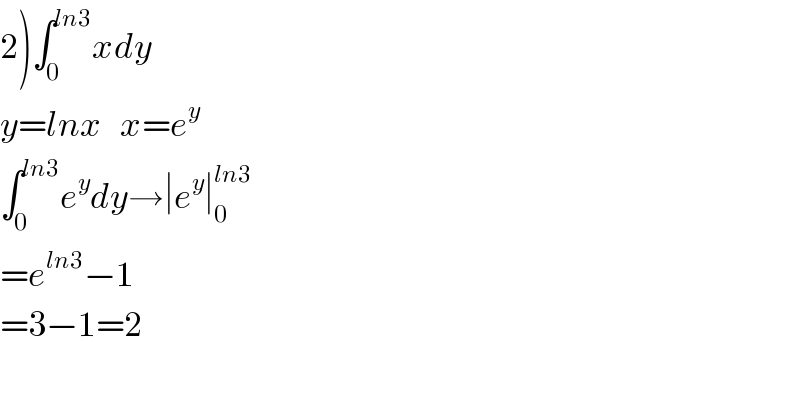Question Number 59474 by rahul 19 last updated on 10/May/19
![1) ∫_0 ^(10π) ([sec^(−1) x]+[cot^(−1) x] ) dx = ? 2)area bounded by curve y=ln(x) and the lines y=0,y=ln(3) and x=0 is equal to ?](https://www.tinkutara.com/question/Q59474.png)
Commented by tanmay last updated on 10/May/19
![1) from graph it cleaer now... [cot^(−1) x]=0 when x [0,10π] ∫_0 ^(10π) [sec^(−1) x]dx+∫_0 ^(10π) [cot^(−1) x]dx ∫_0 ^(sec1) [sec^(−1) x]dx+∫_(sec1) ^(10π) [sec^(−1) x]dx =∫_0 ^(sec1) 0×dx+∫_(sec1) ^(10π) 1×dx =0+(10π−sec1) =10π−sec1](https://www.tinkutara.com/question/Q59492.png)
Commented by tanmay last updated on 10/May/19

Commented by tanmay last updated on 10/May/19

Answered by tanmay last updated on 10/May/19

Commented by tanmay last updated on 10/May/19

Commented by rahul 19 last updated on 10/May/19

